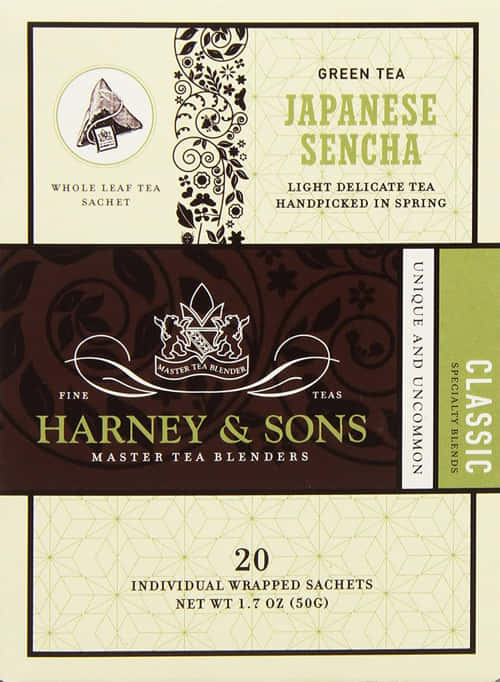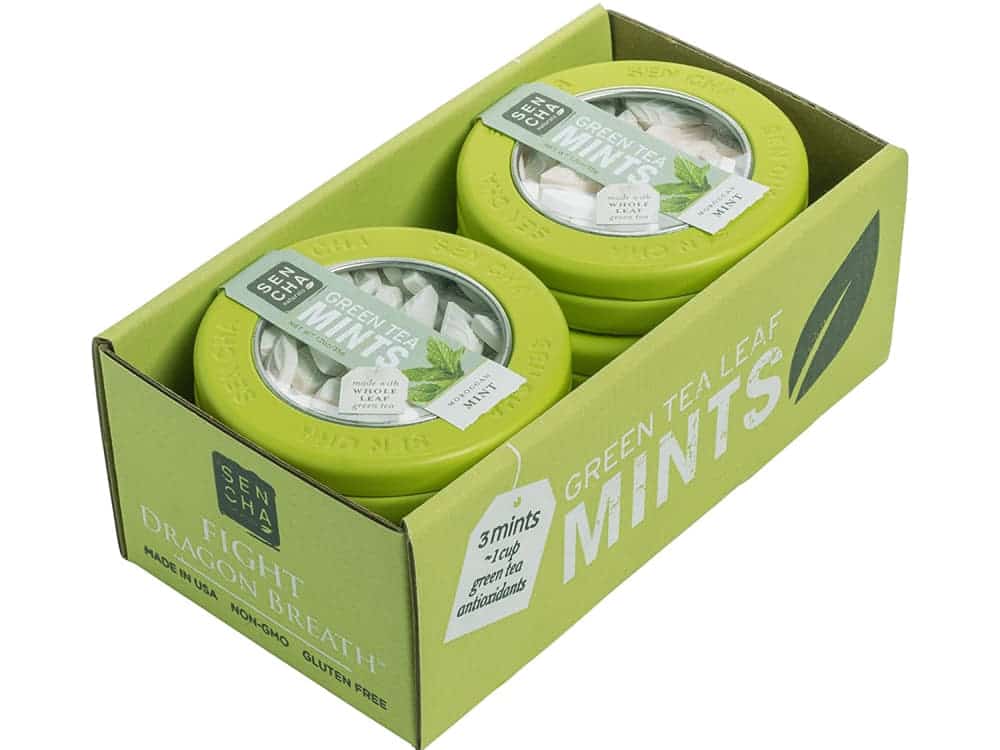In Japan, a country that turns tea into an integral part of their culture, Sencha stands strong as the most popular green tea in the country. More than 50% of all tea produced in Japan is Sencha. Japanese enjoy drinking Sencha green tea daily for its refreshing flavor and excellent health benefits.
Table of Contents
What is Japanese Sencha tea?
Sencha is the quintessential green tea from Japan. It is made of young tea buds and leaves of the Camellia Sinensis plant. Most of Sencha tea production come from southern Japan where has the most ideal condition to grow green tea. The harvested tea leaves go through the process of steaming, drying, kneading, and sorting. The kneading or crumpling step helps to extract the flavor from the tea leaves.
Types of Sencha Tea
There is many different types of Sencha. They are different based on cultivation techniques, harvesting time, processing methods
Asamushi Sencha
It is a lightly steamed form of Sencha, shorter steaming time of 20 to 60 seconds than typical Sencha. It has a light, delicate flavor.
Fukamushi Sencha
This Sencha tea is another popular Japanese green tea. The name Fukamushi Sencha in Japanese is “deep steamed Sencha”. Just like it name, this Sencha tea is steamed longer than normal. The longer steaming time results in green tea with a richer and more robust flavor.
Kuradashi Sencha
Kuradashi is a spring variety of Sencha tea. However, it stored until autumn to develop flavor, and reduce astringency. Therefore this tea is also called aged tea. It has different flavor profile compare to normal Sencha tea.
Kabusecha
Kabusecha is shaded grown green tea for a period of 7 to 14 days. It increases the growth of certain amino acids in tea leaves. Kabusecha has full-bodied flavor, less tannin with a hint of sweetness.
Gyokuro
Gyokuro is the premium grade of Sencha. It is shaded grown for 20 to 30 days. This time and labor-intensive tea have unique umaminess with wonderful aroma and flavor.
Apart from traditional loose leaf tea form, Sencha goes along really well with a wide range of ingredients. You can find Sencha with roasted rice (Genmaicha) that adds some toastiness to the tea. Another one is Sencha with dried mango, sunflower petals that blend the grassiness of Sencha with sweet, tropical flavors.
Sencha green tea health benefits
For a long time, people all over the world enjoy green tea not only for its taste but also for its amazing health properties. It is rich with antioxidants, catechins, vitamins, folic acid, potassium, calcium, phosphorus, and many more.
Drink Sencha green tea regularly improve heart health, digestive health and oral health (teeth strength). The tea help us to control the blood pressure which is very important in fighting many heart diseases.
Since it is rich in antioxidants, studies found that this green tea can help to slow down the growth of cancer-causing cells and tumors.
Green tea has the polyphenolic compound EGCG – epigallocatechin-3-gallate. It has both antimicrobial and anti-inflammatory properties. Green tea is useful in the treatment of acne, reduce sebum excretions, and the appearance of wrinkles. Tea polyphenols have free radical scavenging activity that helps to protect cells from DNA damage. It also protects us from damage caused by ultraviolet (UV) B radiation (National Cancer Institute)
Japanese Sencha teas plays a role in stimulating our metabolism. It promotes passive, fat burning in the body. A lot of healthy weight loss plan recommends the use of green tea with a balanced diet. With a good amount of caffeine, Sencha can also increase alertness, boost energy, and productivity.
Japanese Sencha caffeine content
One 8 fl. oz (236 ml) cup of brewed Japanese Sencha usually contains around 20 to 30 milligrams of caffeine. It is considered an average amount for green tea.
Factors like tea variety, roasting, and other processing methods will alter the caffeine content of the tea. For example, younger leaves and buds that used to make Sencha have a higher concentration of caffeine than mature leaves. But through roasting, that amount of caffeine will reduce.
Moderate caffeine intake of up to 400 milligrams per day is not associated with adverse effects in healthy adults. But if you experience headaches, insomnia, restlessness, abdominal pain, or nausea, you should consult with a doctor before continuing drinking tea or any beverage that has caffeine.
What is Sencha tea taste like?
Sencha green tea has a clean, rich vegetal aroma and deep umami flavor. It has some sweetness, astringency, butternut notes to the taste.
The tea liquor has a bright green to yellow or emerald green color depend on the types of Sencha teas.
Different brewing methods can alter the flavor profile of Sencha. It can taste stronger, weaker, or less astringency depends on how much tea leaves you use, water temperature, and how long you brew them.
Sencha vs Matcha
Sencha and matcha are two very popular Japanese green teas that contribute a great part in the Japanese tea culture. They are produced from the leaves of same Camellia Sinensis plant. In addition, both of them are also famous for theirs amazing health benefits and nutritional value.
However, there are many differences when we compare Sencha vs matcha. Here are some main differences:
Tea form
Sencha green tea is loose tea leaves or rolled leaves product while Matcha is sold and consumed in the powder form.
Tea growing condition
Sencha is grown in open space with direct sunlight condition while tea that used to make Matcha is grown in the covered tea plant. This difference in growing method does not only affect the color of the tea leave but also the taste of the tea itself.
Harvesting and processing
When the tea plants reach the harvesting stage, Sencha tea and matcha tea are also harvested and processed very differently. To produce Sencha tea, the stem with the first 3 leaves are hand picked, then it will be washed, steamed, dried and rolled into needle like before it is distributed for selling in the market.
In the case of matcha, only the first 2 youngest leaves on the tea plant are picked, then it is washed, steamed, dried and grinded into Matcha tea powder which is its final form.
Caffeine in Sencha vs matcha
Since the tea that is used to make matcha is grown under shade. Therefore, the caffeine content remained on the tea leaves are higher than Sencha. If 8 fl. oz (236 ml) cup of Matcha tea has around 55-64 mg of caffeine compare to 20-30mg of caffeine in Sencha green tea. In the other word, matcha has more caffeine than Sencha tea.
Price of sencha vs matcha
Not only has higher caffeine content, Matcha also has higher retail price compare to Sencha tea. The reason for that is because producing matcha is more labor intensive which make the cost of growing, harvesting and processing Matcha tea are more expensive.
Gyokuro vs. Sencha – What are the main differences?
Gyokuro is a premium variety of Japanese green teas. It is grown almost exclusively in the Kyoto region. The tea is shade-grown for 20 to 30 days. It is made from the first flush of tea leaves. The tea has a complex flavor, and unique umaminess develops from the special cultivation method.
Sencha is grown under full sunlight with no shading period. It has a clean, vegetal with a bitter-sweet taste. On the other hand, Gyokuro has a rich flavor, notable sweet taste, and a pleasant aroma. The astringency and the vegetal flavor is very subtle with Gyokuro.
As one of the finest green tea available, the price of Gyokuro is much higher than regular Sencha. It costs between $40 to $60 for 100 grams of Gyokuro tea. That price tag reflects the skillful techniques, time, and great care that take to develop the gourmet Gyokuro.
How to brew Sencha green tea?
These steps below act as an example of a way to brew Sencha loose leaf tea. You can go ahead and experiment with different temperatures and steeping times. Instead of stick to a guideline, brewing a cup of tea that suits your taste should be the ultimate goal.
- Prepare a pot of boiling water (8 fl. oz – 236 ml)
- Pour the hot water into the teapot, carefully rotate it so that the hot water creep up all the way around. Empty the water out
- Put one teaspoon, about 3 grams of Sencha on the teapot
- Pour hot water (180 degrees Fahrenheit – 82 degrees Celsius) into the teapot. Place a lid to cover the teapot.
- Steep the tea for about 2 to 3 minutes. Steeping time should not be longer than 3 minutes to ensure the best taste.
- Pour a cup of Sencha to enjoy
You can steep Sencha for a few times but the first cup always give you the best taste. It is flexible on how to steep/brew Sencha using kyūsu – traditional Japanese teapot, Western teapot, or a tea mug. But avoid brewing Sencha tea for too long as the bitterness will unnecessarily increase.
Sencha tea is often enjoyed hot. However, you also can make Sencha iced tea easily by adding some ice cube to your tea. It can be refreshing and health beverage choice to cool down your hot summer.
Where to buy Sencha Tea?
You can find Japanese Sencha teas in most of Asian or Japanese tea shops. Some of the Asian supermarkets also sell good quality Sencha tea. In today digital world, you also can buy it online on Amazon for your convenience. Remember to read the product reviews to get some feedbacks about the tea products before purchase.
Japanese Sencha tea bags
Although Sencha green tea taste best when you use loose tea leaves and brew it properly as the instruction above. However, if you cannot find a place to buy loose tea leaves, you can also try this premium Japanese green tea in a pre-packed tea bags form. It can be found on Amazon for very affordable price.
Here are some options that I already tasted and quite satisfy with the quality of the tea they used. One of them even use organic Sencha for their tea bag. You can check it out here.
| Image | Product Name | Amazon Price |
|---|---|---|
 |
Maeda-en Japanese Sencha Tea | Check Amazon Price |
 |
Harney & Sons Japanese Sencha | Check Amazon Price |
 |
YAMASAN KYOTO UJI Japanese Organic Sencha green tea | Check Amazon Price |
Sencha green tea mints

Due to its amazing health benefits, Sencha green tea does not stop at only loose tea leaves form. It is also made into the mints form which you can easily enjoy on the go. As it is a mixture between Sencha tea and peppermint, it does not only provide you the health benefits of the tea but also help you to conquer your bad breath naturally.



… [Trackback]
[…] Here you will find 33100 more Information to that Topic: kitucafe.com/japanese-sencha/ […]